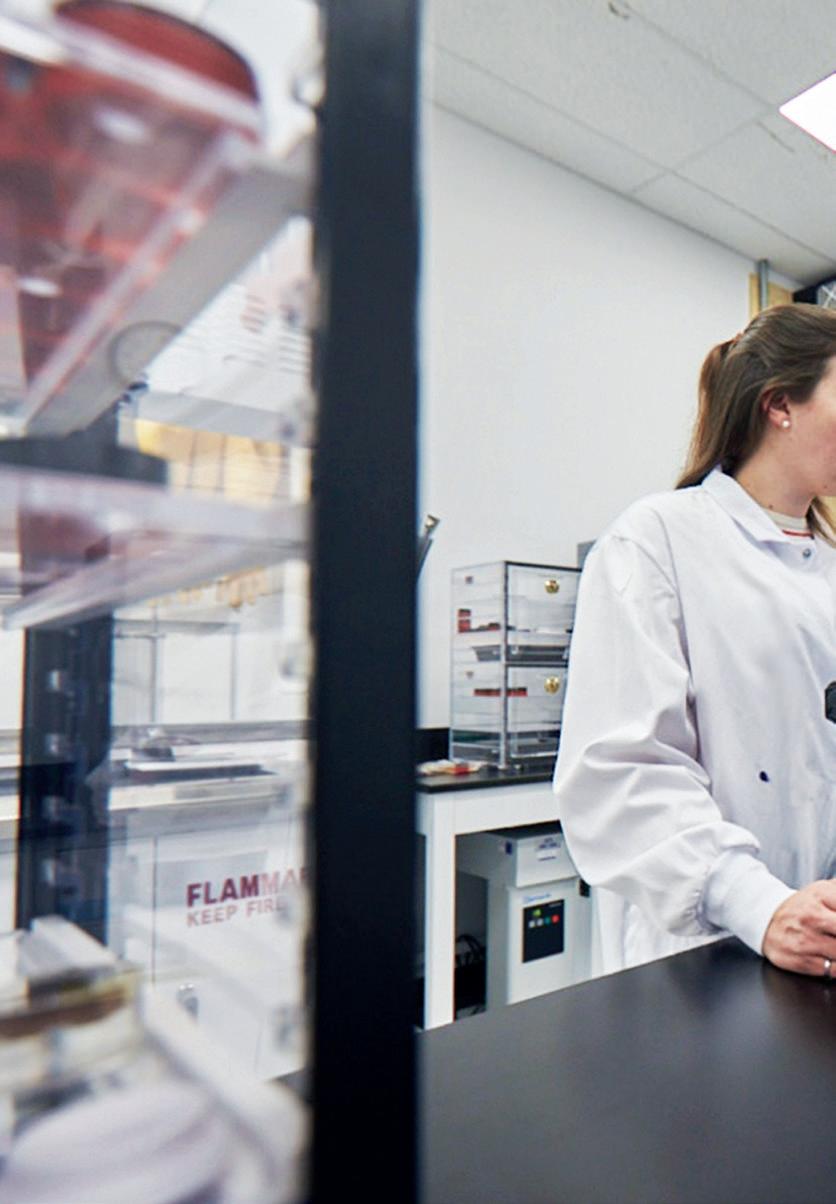HEALTHCARE
ALIF OF COMFORT
Sam Davies speaks to Osseus Fusion Systems' John Bohenick about the company's latest 3D printed medical device.
W
hen John Bohenick dials in to a trans-Atlantic call during his morning commute on February 10th, it has been 45 days since Osseus Fusion Systems made its latest submission to the FDA. As the medical device company’s R&D/ Engineering Manager, Bohenick, who has been central to this application, is waiting patiently for the FDA’s verdict, and has so far twice been required to provide minor clarifications. This, Bohenick notes, is par for the FDA certification course. But since Osseus is seeking a unique surgical indication that no other product currently has, satisfying the FDA at every step is paramount.
“The FDA is putting an acute focus on additively manufactured devices. They really are putting a lens on it.”
“[This] is going to be a differentiable product regardless,” Bohenick begins, “but I think it would make a huge splash on the market by getting an indication that no other device on the market has achieved or has been granted, which is what we’re going for.” The product that has buoyed Bohenick with so much enthusiasm is an additively manufactured Standalone Anterior Lumbar Interbody Fusion (ALIF) device called Pisces that cannot be manufactured with subtractive methods. It is not the first time Osseus has pursued FDA certification of a 3D printed product, having done so successfully in 2018 after launching its Aries interbody fusion device which is made from titanium and features a mesh structure with 80% porosity. This device was among the early additive interbody devices to be introduced on the market and ‘put a wind behind the sails’ of a company that was looking to carve out a niche. Four years on, Osseus has again sought to harness metal additive manufacturing, designing the Pisces device for this very process, but there is the notion that this wouldn’t have been possible in years gone by.
SHOWN: PISCES-SA WITH ANCHOR FIXATION
“There are actual functional features and aspects to this design that have to be done additively,” Bohenick explains. “[But] the way that it’s being manufactured would not have been feasible even two, three years ago because of how specific the tolerancing is being held. [The] postsubtractive process is extremely minor, it’s just a chase on the tap. It’s testament to [how far] additive manufacturing has come.” Although not yet available for sale in the US, Osseus believes Pisces will become the new standard for Standalone ALIF devices. It is available at a range of heights between 9-19mm, in footprints between 23 x 29mm and 29 x 39mm and can be implanted with anchors or screws. By integrating a highly porous 3D printed interbody with anatomical morphology, the device has been designed for full osseointegration, streamlined instrumentation and anchor fixation technology for a minimally invasive approach. Additionally, a guided locking plate prevents any sort of dislodgment or motion of the fixation, while the mesh structure of the device boasts nearly 80% porosity and also provides load bearing support. “[80% porosity] is, I think, pretty impressive considering the strength that we were able to get out of it,” Bohenick says. “A majority of the volume of the interbody is made up of a porous, bilateral mesh meaning that it cuts through from both sides, so not just a unilateral mesh that some interbody devices have. That mesh, which allows you to maximise strength while also decreasing mass and allows for bone growth through, acts more as a scaffold. You’re trying to optimise the load that you’re bearing, while not having unused material. That mesh structure is really impossible to be manufactured subtractively.”
30.2 / www.tctmagazine.com / 011









